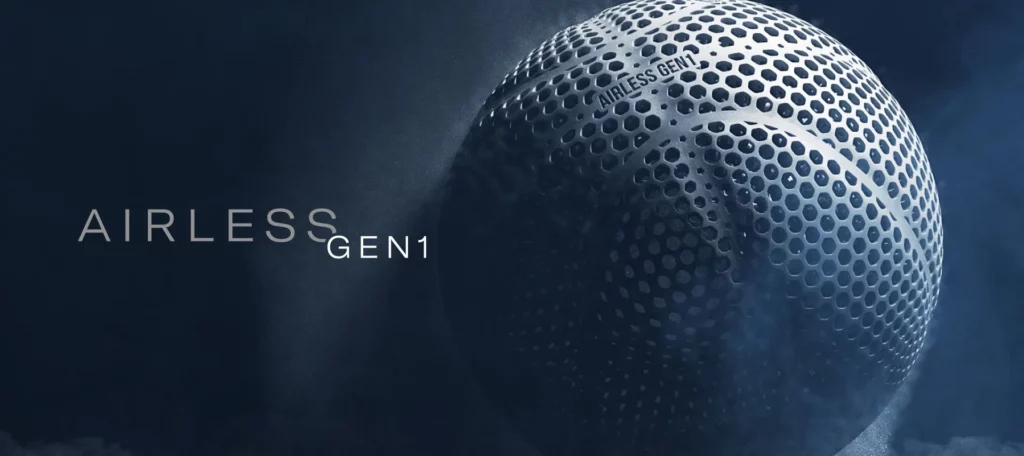Basketball has undergone numerous innovations since its invention in 1891, from changes in rules to advancements in equipment. One of the most remarkable recent innovations is the advent of 3D printed basketballs, with Wilson leading the charge. This technological leap promises to revolutionize the game by enhancing performance and offering unprecedented customization.
Table of Contents
The Genesis of 3D Printed Basketballs
3D printing, has been making waves across various industries, from healthcare to aerospace. The technology involves creating objects layer by layer from a digital file, allowing for intricate designs and highly customizable products.
Applying this technology to basketballs is a novel idea that aims to optimize the design and functionality of the ball, addressing long-standing issues related to durability and performance.
Wilson’s 3D Printed Basketballs
Wilson, a leading manufacturer of sports equipment, unveiled its first 3D printed basketball prototype at the NBA All-Star Weekend in February 2023. This basketball, dubbed the “Airless Prototype,” signifies a substantial departure from traditional basketball design, incorporating cutting-edge technology to redefine the playing experience.
Design and Construction
The Wilson 3D printed basketball is unique in its construction, eschewing the traditional bladder and leather or synthetic outer cover. Instead, it features an intricate lattice design, which is both lightweight and robust. The ball is printed using a combination of advanced polymers that provide durability and a tactile feel similar to conventional basketballs.
One of the most notable aspects of the Wilson 3D printed basketball is its “airless” design. Unlike traditional basketballs that rely on an inflatable bladder to maintain shape and bounce, this ball’s structure itself provides the necessary resilience and elasticity. This eliminates issues such as punctures and air leakage, ensuring consistent performance over time.
The process of 3D print Basketball
The fabrication of a basketball via additive manufacturing involves several key stages. Firstly, a Computer Aided Design (CAD) model is generated, defining the precise geometry of the basketball including size, panel configuration, and surface texture. Material selection is crucial; the chosen filament or powder must possess a balance of high strength and flexibility to achieve optimal bounce and durability. Fused Deposition Modeling (FDM) or Selective Laser Sintering (SLS) are then employed for layer-by-layer deposition of the chosen material, gradually building the spherical form. Post-processing steps may include support structure removal, surface finishing techniques to ensure consistent bounce characteristics, and potentially the application of final coatings or paint for a professional aesthetic.
Performance and Advantages
Wilson’s 3D printed basketball offers several performance benefits:
- Consistency: The ball’s design ensures uniform bounce and responsiveness, crucial for high-level play. The elimination of the bladder means there are no variations in air pressure, leading to consistent performance regardless of external conditions.
- Durability: The advanced polymers used in the 3D printing process are highly resistant to wear and tear. This durability extends the ball’s lifespan, making it a cost-effective choice for players and organizations.
- Customization: 3D printing allows for the creation of basketballs tailored to specific preferences. Players can choose the texture, weight, and even the aesthetic design of their basketballs, leading to a more personalized playing experience.
- Sustainability: The 3D printing process generates less waste compared to traditional manufacturing methods. Additionally, the materials used in the Wilson 3D printed basketball are recyclable, aligning with growing environmental sustainability efforts.
The Future of 3D Printed Basketballs
3D printed basketballs are bouncing into the future, and the game could be quite different. Here’s a glimpse of what’s on the horizon:
3D printing allows for personalized designs, from optimizing grip patterns to even incorporating a player’s name or favorite team colors. The ability to create complex internal structures opens doors for performance tweaks. We might see balls with variable bounce depending on the court surface, or ones with improved aerodynamics for sharper swishes.
3D printing can utilize recycled materials more easily than traditional manufacturing. This, combined with less waste in production, could lead to a more sustainable basketball industry.
While large-scale home printing might be a ways off, 3D printing hubs could offer on-demand basketball production, reducing reliance on pre-manufactured stock.
Of course, challenges remain. Cost reduction and optimizing printing speeds are crucial for wider adoption. But with the recent release of the Wilson Airless Gen 1, the future of basketball is demonstrably 3D printed, and the possibilities are as endless as a perfectly executed behind-the-back pass.
Conclusion
The introduction of Wilson’s 3D printed basketball is a testament to the power of innovation in sports technology. By leveraging the capabilities of 3D printing, Wilson has created a product that not only improves the playing experience but also addresses key issues related to durability and sustainability. As this technology continues to develop, it will undoubtedly shape the future of basketball, offering players at all levels unprecedented opportunities for customization and performance enhancement.


